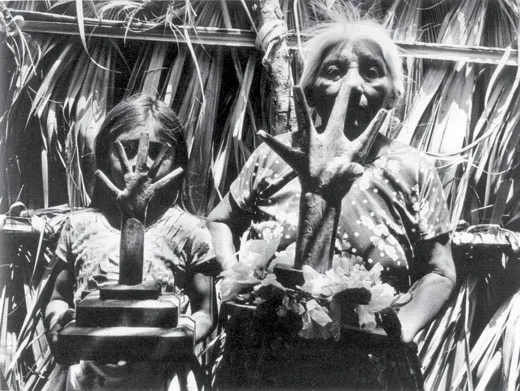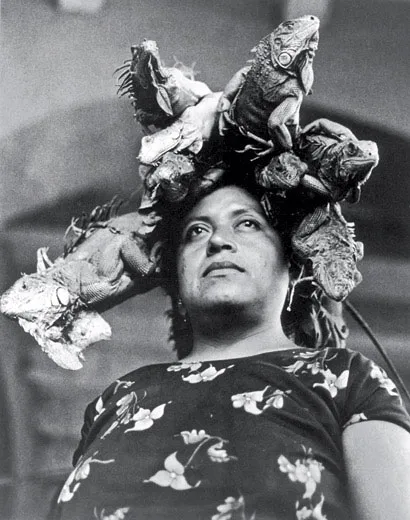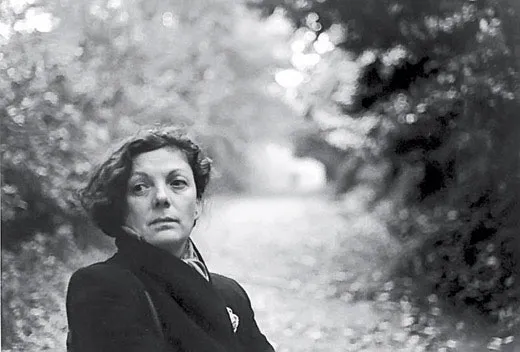Day of the Iguanas
On a morning in a Oaxacan market, photographer Graciela Iturbide made one of the most enduring images of Zapotec life
In the early 1920s, Diego Rivera returned to Mexico City from a trip to Oaxaca and began telling friends about a place where strong, beautiful women ruled. Soon Rivera was painting such women, and within a decade, the list of artists and intellectuals that followed the road south to Oaxaca included Frida Kahlo, Sergei Eisenstein and Langston Hughes. Photographers came too: Henri Cartier-Bresson, Tina Modotti, Edward Weston. To varying degrees, they were all taken with the indigenous Zapotec women on the Isthmus of Tehuantepec and the culture in which they really did enjoy more power and freedom than other women in Mexico.
Graciela Iturbide didn't travel to the region until 1979, but the photographs she made there have proved to be some of the most enduring images of Zapotec life. And her portrait of a woman named Zobeida—titled Nuestra Señora de las Iguanas (Our Lady of the Iguanas) and included in Graciela Iturbide: Juchitán, a recent collection of Iturbide's work—has practically become a symbol of Zapotec womanhood.
By the time Iturbide made her trip to the isthmus city of Juchitán, she had already shed several skins. Married at 20, a mother of three by 23, she seemed set for a traditional life as an upper-class wife in Mexico City. But her 6-year-old daughter died from an illness in 1970, and later Iturbide and her husband divorced. Although she had been studying filmmaking, Iturbide signed up for a still photography class taught by the Mexican master Manuel Alvarez Bravo. She was one of only a few students to enroll, and the class developed into an apprenticeship.
Iturbide had begun photographing in Mexico City and among the Seri Indians in the Sonora Desert when, in 1979, she was invited to take pictures in Juchitán by the artist Francisco Toledo, a native son and an advocate for the region's arts and culture. Iturbide spent a few days observing the Zapotec women, who seemed to project an almost ethereal self-possession—independent, at ease with their bodies and comfortable with their power, which came from control of the purse. "The men work" on farms and in factories, Iturbide says, "but they give money to the women."
The women also ruled the marketplace, where they sold textiles, tomatoes, fish, bread—"everything," Iturbide says, "all of it carried on their heads." It was amid the market's tumult one morning that she spotted Zobeida (whose name has also been given, incorrectly, as Zoraida). "Here she comes with the iguanas on her head! I could not believe it," Iturbide says. As Zobeida got ready to sell the lizards (as food), the photographer says, "she put the iguanas on the ground and I said: 'One moment, please. One moment! Please put the iguanas back!'"
Zobeida obliged; Iturbide raised her camera. "I had a Rolleiflex; only 12 frames and in this moment," she says. "I didn't know if it was OK or not."
It was more than OK. A year or so later, Iturbide presented several of her Juchitán photographs to Toledo, to be shown in a cultural center he had founded in the city. Somewhat to her surprise, Our Lady of the Iguanas—which she considered as but one image among many—was a hit. Residents asked for copies of it, and they put it on a banner. "The image is a very important one to the people of Juchitán," Iturbide says. "I don't know why. Many people have the poster in their house. Toledo made a postcard." The locals renamed the image "The Juchitán Medusa." "There are many legends about the iguanas and other animals, and maybe that image relates," Iturbide says. "Maybe."
Although Iturbide returned to Juchitán many times for the better part of a decade, she also traveled widely, photographing in Africa, India and the American South. To her surprise, the Juchitán Medusa also traveled—turning up as an element in a Los Angeles mural, for example, and in the 1996 American feature film Female Perversions (starring Tilda Swinton as an ambitious, conflicted lawyer). When Iturbide went to Japan for an exhibition of her work, the curator told her he was glad she didn't bring her iguanas, says Rose Shoshana, founder of the Rose Gallery in Santa Monica, California, which represents Iturbide.
Ultimately, the pictures the photographer made in Juchitán were important to both her work and her reputation, says Judith Keller, who curated a recent Iturbide retrospective at the Getty Center in Los Angeles. "It reinforced her concern about the lives of women, and it validated her thinking that this is an important topic and this is something she should continue with," Keller says. In October, Iturbide will be awarded the Hasselblad Foundation International Award.
As for the Lady of the Iguanas herself, Zobeida died in 2004, but not before the image made her something of a celebrity. As anthropologists debated the exact nature of Juchitán society (matriarchal? matrifocal?), journalists would seek her out to ask, inevitably, if she was a feminist. Iturbide says Zobeida would answer: "'Yes. When my husband died, I work. I take care of myself.'"
Lynell George writes about arts and culture for the Los Angeles Times.


